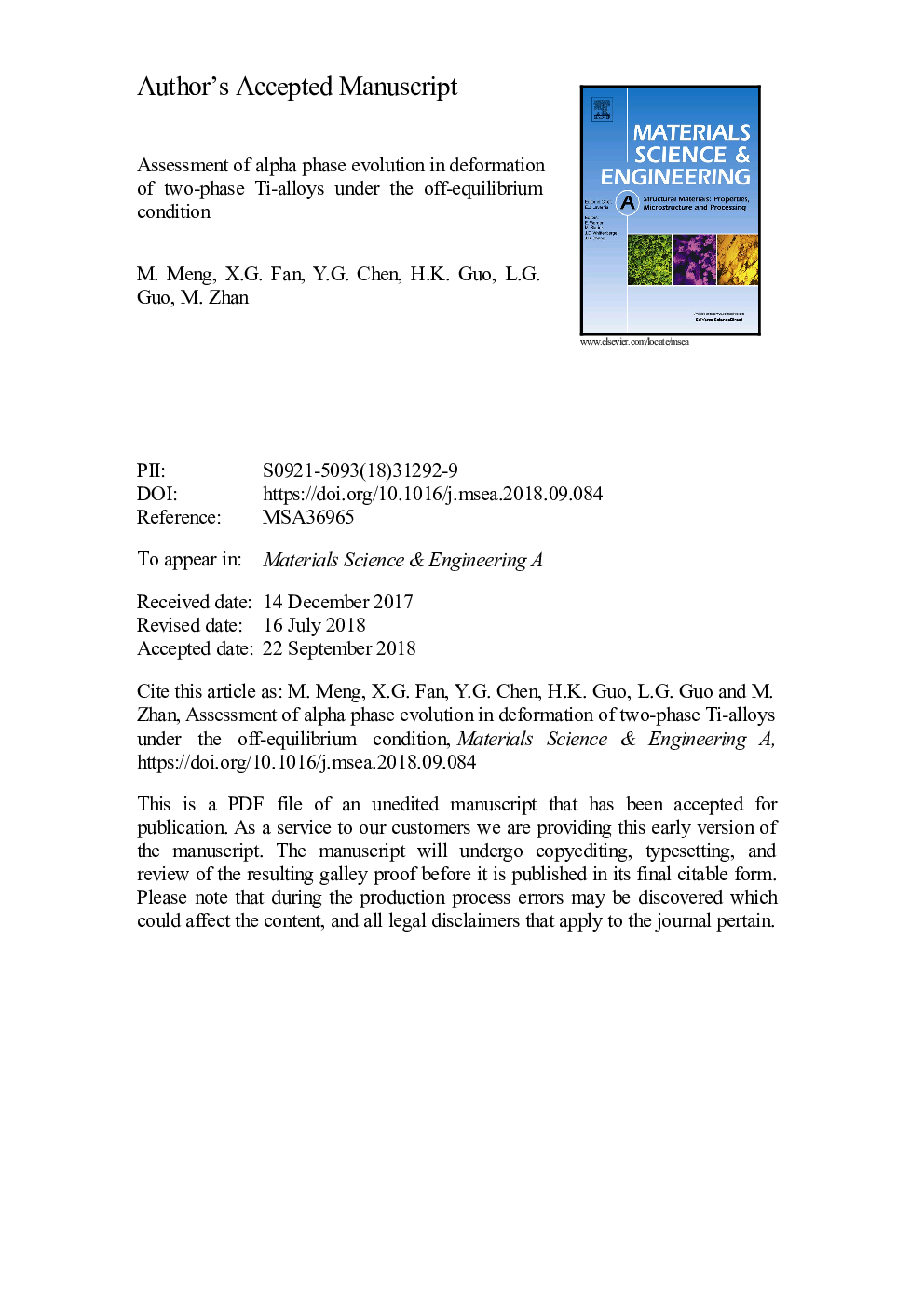| Article ID | Journal | Published Year | Pages | File Type |
|---|---|---|---|---|
| 11020068 | Materials Science and Engineering: A | 2018 | 25 Pages |
Abstract
In this paper, the microstructure development and flow behavior in the near isothermal forming of two-phase titanium alloys were studied through designing an off-equilibrium analog experiment. The results show that deformation decreases the volume fraction of primary alpha (αp) phase significantly at high temperature. This can be ascribed to the occurrence of dynamic transformation of αpâβ by calculating the Gibbs energy barrier based on solution thermodynamics and the drive force from stress difference between αp and β phases. With the decrease of temperature, αp phase fraction varies little with deformation as a result of the counteraction between dynamic transformation of αpâβ and strain-induced phase transformation of βâαp. However, the deformation under the off-equilibrium condition can accelerate the precipitation kinetics of secondary alpha (αs) phase evidently. Moreover, a large amount of fine equiaxed αs phase can be formed by intragranular nucleation. Finally, it is found that, with the deformation at high temperature, the loss of Hall-Petch strengthening is principal source of flow softening. Meanwhile, the quantity of flow softening is less than that of the loss of Hall-Petch strengthening, which is associated with pronounced precipitation of αs phase. At the low temperature, flow softening by the loss of Hall-Petch strengthening is minor compared to that by αs laths rotation.
Related Topics
Physical Sciences and Engineering
Materials Science
Materials Science (General)
Authors
M. Meng, X.G. Fan, Y.G. Chen, H.K. Guo, L.G. Guo, M. Zhan,
